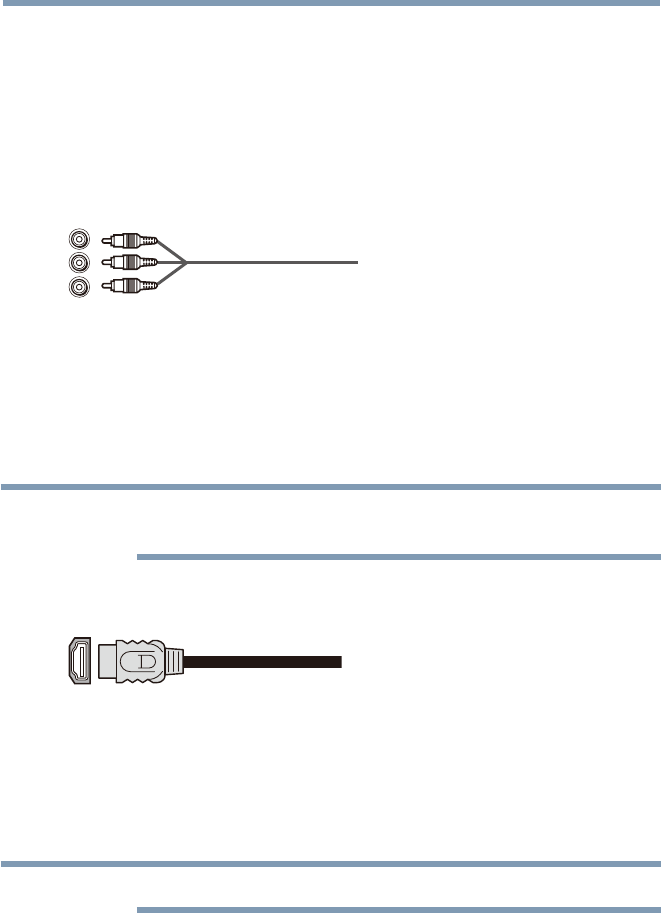
28
Connecting Your TV
Standard A/V cables (composite video) usually come in sets of three, and
connect to video devices with analog audio and composite video output.
These cables (and the related inputs on your TV) are typically color-
coded according to use: yellow for video, red for stereo right audio, and
white for stereo left (or mono) audio.
Component video cables (red/green/blue)
(Sample Illustration) Component video cables
Component video cables come in sets of three and are for use with video
devices with component video output. (ColorStream
®
is Toshiba’s brand
of component video.) These cables are typically color-coded red, green,
and blue. Separate audio cables are required for a complete connection.
NOTE
Component video cables provide better picture quality than composite
video cables.
HDMI
™
cable (with HDMI Logo)
(Sample Illustration) HDMI
™
cable
HDMI
™
(High-DenitionMultimediaInterface)cableconnectstodevices
that have an HDMI
™
output. An HDMI
™
cable delivers digital audio and
video in its native format. Separate audio cables are not required, see
“Connect a computer to the TV’s HDMI
™
terminal” on page 43.
NOTE
HDMI
™
cables provide the best audio and picture quality.
Dual-wand IR blaster cable
Connect the dual-wand IR blaster cable to the IR blaster terminal to
control infrared remote controlled devices from the TV.
Overview of cable types


















